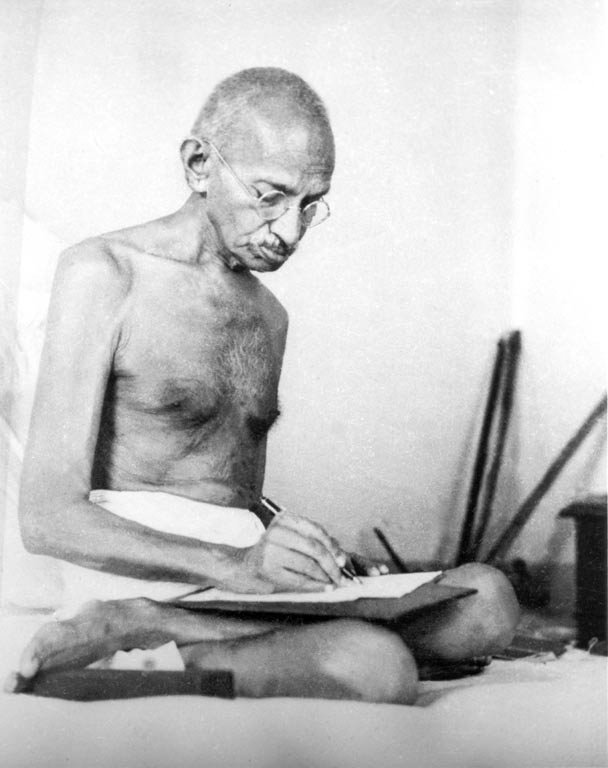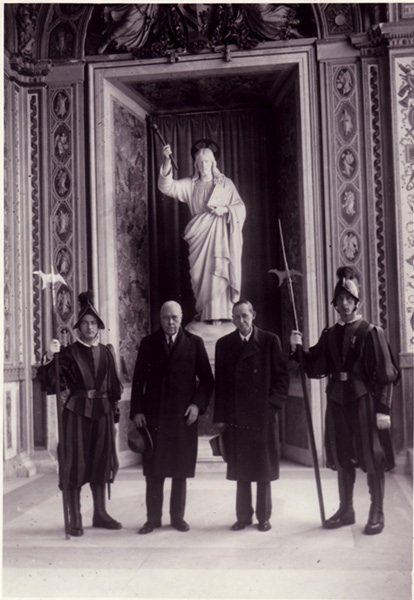The lend-lease program established between the Allies and the Soviet Union involved the provision of allied equipment to bolster the Soviet war effort during World War II. This aid played a crucial role in supporting the Soviets during the initial stages of the conflict because the Soviet Union’s production capability was relatively low earlier in the war. As a gesture of gratitude, the Soviets agreed to repay this assistance by sending £1.5 million sterling worth of gold to the Allies. However, tragedy struck with the sinking of the HMS Edinburgh, the vessel tasked with transporting this gold to Britain, resulting in the loss of the precious cargo.
Kyle Brett explains.
Before you read on, you can join us for free by clicking here.
The severely damaged stern of the HMS Edinburgh's after being torpedoed by U-456.
HMS Edinburgh’s service
Edinburgh was a town-class light cruiser that was launched on March 31, 1938. She would spend the beginning years of the war protecting convoys in the North Sea. At one point she was sent to hunt down the German Battleship Scharnhorst but was unable to locate the ship. After this Edinburgh was sent to protect convoys heading to North Africa and the Middle East.
In the middle of this term, she was sent to the Bay of Biscay to intercept the German Battleship Bismark, but the Bismark never made it to Edinburgh, meeting her fate far west of the Bay. After her travels to the Mediterranean, Edinburgh would be sent to the North Sea once again protecting convoys bound for the Soviet Union with aid from the Western allies. She would also spend some time patrolling Iceland for German vessels. She would not see too much action here as Germans would only be hunting convoys and not patrols.
The Soviet gold
The lend-lease act was a major part of Allied cooperation during the war. Many of the pieces of equipment that the Allies would send to the Soviet Union would be put to good use. US and British planes fought at the battles of Moscow and Stalingrad, the mighty Katyusha rocket launchers would be loaded onto Studebaker US6 trucks and would be utilized by the Soviets throughout the war. The allied equipment made a large impact on the war and played a part in the success of the Soviets.
The Soviets would seek to send some sort of repayment to the allies, and this would be through gold. The war had kicked the Soviet industrial machine into high gear and thus their mining operations grew substantially from this. The Soviets would use gold, and other precious metals like platinum to help the allies and to pay them for the support that they had given the Soviet Union during the early part of the war. 4.5 tons of this gold would be loaded onto the HMS Edinburgh in Murmansk and sent to Britain around the top of the Scandinavian Peninsula.
Departure and first sighting
Edinburgh was the commanding escort of Convoy QP: 11, which consisted of 13 Merchant ships of various allied nationalities and 18 warships. The composition of the convoy was one cruiser: Edinburgh, six destroyers, four minesweepers, and one armed trawler. The convoy had just dropped off supplies to the Soviet Union and was making a return trip to Britain.
On April 28, 1942, the convoy would depart the port of Murmansk headed for Britain. The next day as the convoy was traversing the North Sea they would be spotted by a German spotter plane. This plane would relay its position to the German command. They would then order all nearby U-boats to attack the convoy, as well as sending a nearby task force of 3 destroyers to intercept the convoy.
April 30, 1942
As the day progressed the calmness of the last two days was broken by two U-boats who started making attacks on the convoy. The two U-boats, U-88 and U-456, had not found any success in their attacks earlier in the day. Later in the day U-456 would make another pass on the convoy and found success with this attack. U-456 launched a spread of torpedoes at HMS Edinburgh and scored 2 hits on her. One torpedo hit the forward boiler room, crippling Edinburgh’s speed. The second torpedo smashed into the stern, blasting the entire stern of the ship off. This stern hit also destroyed the rudder and took 2 of the 4 propellers off Edinburgh. The crew closed all the bulkheads immediately which saved her from sinking after the second impact.
This concluded U-88 and U-456’s attacks on the convoy. Edinburgh would be forced to turn back to Murmansk as she was unable to make the journey back to Britain with the immense damage she had sustained. Edinburgh would be escorted by two destroyers Foresight and Forester on her journey back to port. Murmansk also had sent 8 ships to help protect and help return Edinburgh to port so she could repair.
May 1, 1942
The 3 German destroyers dispatched to intercept the convoy were Z7 Hermann Schoemann, Z24, and Z25 of destroyer group Arkits. They had orders to attack the ships of the convoy and after hearing the success of U-456’s attacks they also had orders to sink Edinburgh. There was limited visibility as there was on-and-off rain and snow. The destroyer group opened up with their guns on the convoy at 14:05.
The remaining 4 destroyers protecting the convoy raced to screen the convoy from the attacking German destroyers. They started off the engagement with each other at around 10,000 yd. They traded fire with the Germans as the convoy tried to retreat to safety. The British destroyer Amazon was hit twice by German guns and received moderate damage. A spread of torpedoes was fired at the convoy and found a target at 14:30 sinking the only Soviet merchant ship in the convoy the Tsiolkovski. At 17:50 the German destroyers retired their convoy pursuit and turned to hunt down Edinburgh.
May 2, 1942
Edinburgh was spotted east of the convoy at 6:17 limping along at two knots. The Foresight and Forester were escorting her along with 4 British minesweepers and a Soviet guard ship the Rubin that met up with the group from Murmansk. Edinburgh was being towed because she could not sail in a straight line, only in circles due to the damage to her propellers and rudder. The lead German destroyer Z7 Hermann Schoemann had been separated from her other two destroyers and decided to close the distance to Edinburgh to launch torpedoes at the group. As the German group was spotted the tow lines that were used to keep Edinburgh sailing in a straight line were cut, causing her to sail in circles as the escorts went to screen the cruiser from the incoming destroyers.
Edinburgh, with no fire control systems due to the damage from the earlier day, sent two salvos toward Hermann Schoemann. The first salvo had missed its target, the second salvo hit Hermann Schoemann in both of her engine rooms. This forced her to turn away from the engagement and to create a smoke screen for her to slip away from the fight.
At 6:45 Z24 and Z25 arrived at the engagement hitting and disabling Forrester. They moved onto Foresight badly damaging her and afterwards launching torpedoes at the two British destroyers. One of these torpedoes had missed its original target and at 6:52 crashed into Edinburgh. The torpedo had hit directly on the opposite side of the first torpedo hit from U-456, which meant only the deck and keel plating were holding the ship from breaking in two.
Aftermath of the Battle
Z24 and Z25 saw the 4 British minesweepers and were scared off by their presence, most likely misjudging the ships' classes and thinking they were a bigger threat than they were. They turned to rejoin their ally who had fled. They reached Hermann Schoemann at 8:15 and Z24 rescued the remaining crew that she could fit. The Herman Schoemann was scuttled and the remaining crew in life rafts were picked up by U-88 and the Germans retreated from the battle.
The decision to abandon ship was given on Edinburgh and she had her crew evacuated to the nearby British minesweepers Harrier and Gossamer who each took around 400 sailors. After Edinburgh was evacuated Harrier tried to scuttle her with her 4-inch guns, but after 20 shots she was still afloat. There were even attempts to drop depth charges near her to no avail. Finally, Foresight launched her last torpedo into her, sending her to the bottom. This sent all 4.5 tons of gold straight to the bottom of the North Sea.
The British destroyers and minesweepers made a safe return to Murmansk and the original convoy would be unsuccessfully attacked by two more U-boats to no success finally making it to Iceland. The only casualties were the Edinburgh, her gold, and the Tsiolkovski merchant vessel.
What happened to the gold?
The gold aboard Edinburgh was of great importance to the British government after the war and they were keen on recovering that gold from the sea floor. In 1954 the British government awarded the salvage rights to Risdon Beazley Ltd. This salvage operation was halted due to rising tensions between the Soviet Union and the West.
However, in the 1970s, the price of gold spiked, renewing the desire to recover the gold. So, the British returned to the wreck to recover the gold. Utilizing state-of-the-art equipment, the divers descended to the wreck, which was 800 ft deep, and were able to locate 431 of the 465 gold ingots aboard the vessel. The haul, valued at forty million pounds at the time of recovery, served as the primary motivation for the British to find this gold in the Edinburgh. In 1985, a further 29 bars were recovered, leaving 5 unaccounted for.
Enjoy that piece? If so, join us for free by clicking here.
Reference
Tucker, Spencer. World War II at sea an encyclopedia. Santa Barbara, CA: ABC-CLIO, 2012.

















